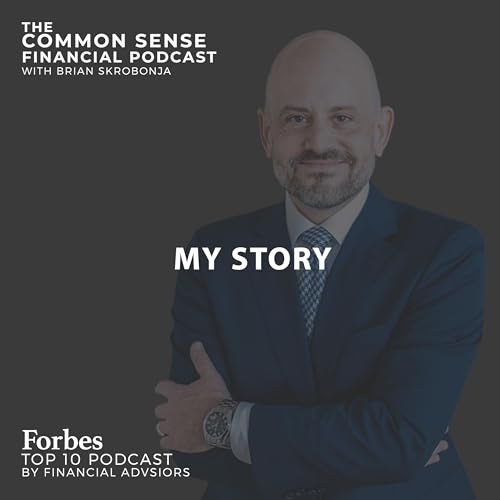Brian Skrobonja talks about the hidden trap of survival mode: that quiet, familiar mindset that keeps you safe but small. He explains why so many people in midlife mistake control for security, and how shifting from a scarcity mindset to a mentality of abundance changes everything about how you earn, spend, and live. Tune in to hear what it really takes to move from survival to strategy, from managing scarcity to creating abundance, and why your next level of wealth starts in your mind, not your bank account. Brian starts by explaining how time sneaks up on us. One day you're in your 20s, and before you know it, decades have passed and you're in your 40s and 50s.Brian reveals that survival mode can feel safe because it's familiar. It got you through the student loans, the mortgage, the chaos of raising kids. But staying there too long turns what once protected you into what now holds you back.Learn why survival mode isn't a wealth strategy, it's a coping mechanism. It helps you survive the storm, but it won't help you build the life you're meant for.Brian explains what survival mode sounds like — phrases like "let's just get through this month," or "I'll do it myself, why pay someone else." It's the mindset of always managing crisis instead of creating space. And over time, that mindset becomes a ceiling you can't see but always feel.According to Brian, the midlife shift begins when you realize your greatest assets aren't money or status. They're your time, your energy, and your ability to think beyond what used to be possible. Brian reveals that in survival mode, every dollar has a job: pay bills, pay debt, save a little, repeat. But in strategy mode, every dollar has a mission: grow, create margin, and buy back time.How to see money differently: not as control, but as freedom. Brian shares that when couples view money as a tool to create experiences and peace of mind, their entire relationship with it changes. Suddenly, money becomes connection, not conflict.Learn how to shift from scarcity to abundance thinking. From "there's never enough" to "I can create more."Brian reveals that scarcity doesn't always look like struggle. Sometimes it looks like the person who's debt-free but afraid to invest or try something new. It's protection disguised as prudence, and it keeps your potential locked away.Brian explains the danger of carrying your old survival habits into midlife. You might think you're being smart, but what you're really doing is protecting what you have instead of growing what's possible. You end up loyal to your limitations instead of your evolution.For Brian, abundance isn't fantasy thinking. It's confidence in your ability to generate value, attract opportunity, and recover from mistakes. Learn how abundance thinking changes the questions you ask. Instead of "how do I save more," you begin asking, "how can I multiply this?" Instead of "what will this cost me," you start asking, "what could this create for me?"Brian explains that money is energy, it flows both ways. When you spend it to buy back time or peace of mind, that's not waste, it's wisdom. Your return isn't just financial, it's emotional, mental, and deeply human.Why buying back your time matters: it's not indulgent, it's stewardship. The moment you start using money to free your schedule, your mind expands. You make room for strategy, creativity, and joy — the real sources of wealth.Brian reveals that money doesn't change who you are, it amplifies you. If you lead with fear, more money only multiplies that fear. But if you lead with purpose, money becomes fuel for everything that truly matters.Brian explains that wealthy people don't do it all themselves. They hire experts, delegate complexity, and buy back focus. They understand that leverage isn't loss of control, it's how they multiply their capability.Why community matters: scarcity breeds more scarcity when you stay around people who think small. Brian urges you to surround yourself with those who think in terms of growth, possibility, and opportunity.Brian closes with a challenge: stop asking, "What will this cost me?" and start asking, "What can this create for me?" That one question can open the door to your next chapter — a life that's not just about surviving, but thriving in full alignment with who you're becoming. Mentioned in this episode: BrianSkrobonja.com SkrobonjaFinancial.com SkrobonjaWealth.com BUILDbanking.com Common Sense Financial Podcast on YouTube Common Sense Financial Podcast on Spotify Alternative investments may be subject to less regulation than other types of pooled investment vehicles. Alternative Investments may impose significant fees, including incentive fees that are based upon a percentage of the realized and unrealized gains and an individual's net returns may differ significantly from actual returns. Such fees may offset all or a significant portion of such Alternative Investment's trading profits. Incorporating ...
Más
Menos
 Nov 26 202511 m
Nov 26 202511 m Nov 19 202516 m
Nov 19 202516 m 13 m
13 m 28 m
28 m 17 m
17 m Oct 22 202518 m
Oct 22 202518 m 15 m
15 m 22 m
22 m
